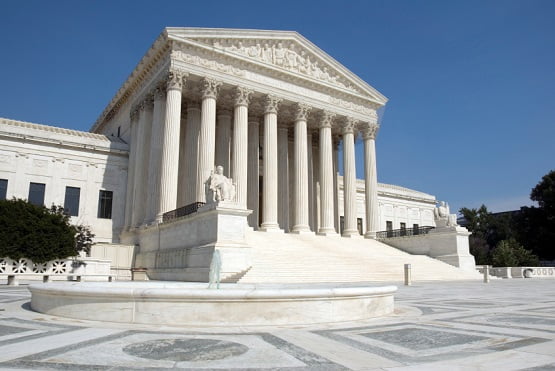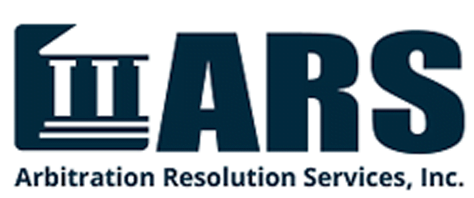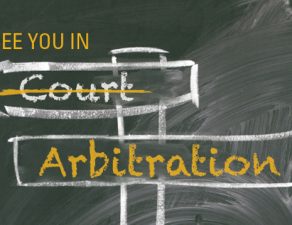
Just as we went to press came word that, based on statutory construction, the Supreme Court has decided Badgerow v. Walters, No. 20-1143, ruling 8-1 that the “look through” doctrine does not apply to actions to confirm or vacate an arbitration award under sections 9 and 10 of the Federal Arbitration Act (“FAA”), even though it does for motions to compel arbitration under section 4.
As reported in SAA 2021-19 (May 20), the Supreme Court in May 2020 granted Certiorari in this case involving application of the “look through” standard. Specifically, the Court agreed to review Badgerow v. Walters, 975 F.3d 469 (5th Cir. 2020), a case we analyzed in SAA 2020-36 (Sep. 23). In the underlying case, the Fifth Circuit held that the District Court was correct when it applied the “look through” standard to determine that it could remove a state court action to vacate a FINRA Award.
The Case Below
A FINRA Panel rendered an Award denying AP Badgerow’s claims against Ameriprise and three “franchise advisors,” triggering a petition to vacate by Badgerow in a Louisiana trial court. The Respondents then removed the case to federal court. Thereafter, the District Court confirmed the Award, finding no fraud in its procurement as Badgerow had alleged. Before the Fifth Circuit was whether the District Court acted properly in determining it had federal jurisdiction to support removal.
The FAA and Federal Jurisdiction
Because the FAA does not confer federal jurisdiction, another basis such as diversity of citizenship or a federal question must be present. As reported in SAA 2021-39 (Oct. 21), a wonderful primer on the FAA and federal jurisdiction was provided by the unanimous Connecticut Supreme Court decision in A Better Way Wholesale Autos, Inc. v. Saint Paul, No. SC20386 (Conn. Oct. 12, 2021). The case dealt with whether the shorter time to vacate an award under state law – Connecticut General Statutes § 52-420 (b) – was preempted by the FAA. The Court held it was not, because the State’s law: “… does not stand as an obstacle to the accomplishment of the federal policy to enforce arbitration agreements.”
The “Look Through” Standard Under FAA Section 4 Petitions to Compel
The Supreme Court in Vaden v. Discover Bank, 556 U.S. 49 (2009), held that jurisdiction over a petition to compel arbitration under FAA section 4 is determined by the nature of the underlying dispute. This was based on section 4 language providing that a motion to compel arbitration can be brought in “any United States district court which, save for such agreement, would have jurisdiction under title 28, in a civil action or in admiralty of the subject matter of a suit arising out of the controversy between the parties.” The Vaden standard became known as the “look through” standard.
Majority of Circuits Extend the Standard to Award Confirmation
Over the years, a majority of Circuits considering the question (First, Second, Fourth, and Fifth) have extended the “look through” standard to post-award petitions to confirm or vacate/modify. See, for example, Doscher v. Sea Port Group Securities, LLC, 832 F.3d 372 (2d Cir. 2016), where the Second Circuit extended Vaden’s “look through” jurisdictional test to actions to confirm (FAA section 10) or modify (FAA section 11) awards under the FAA. The Third and the Seventh Circuits have adopted a contrary view, limiting the “look through” standard to actions to enforce arbitration agreements. See, for example, Goldman v. Citigroup Global Markets Inc., 834 F.3d 242 (3d Cir. 2016). The issue identified for review in the granted Petition for Certiorari: “Whether federal courts have subject-matter jurisdiction to confirm or vacate an arbitration award under Sections 9 and 10 of the FAA where the only basis for jurisdiction is that the underlying dispute involved a federal question.”
SCOTUS: No “Look Through” in Award Enforcement or Challenges
The 8-1 majority (Justice Breyer dissenting) holds that the language in FAA sections 9 and 10 does not support application of the look through standard to award enforcement or challenges. Writing for the majority, Justice Kagan’s Opinion states:
“In Vaden v. Discover Bank, 556 U. S. 49 (2009), we assessed whether there was a jurisdictional basis to decide a Section 4 petition to compel arbitration by means of examining the parties’ underlying dispute. The text of Section 4, we reasoned, instructs a federal court to ‘look through’ the Opinion of the Court petition to the ‘underlying substantive controversy’ between the parties—even though that controversy is not before the court…. If the underlying dispute falls within the court’s jurisdiction—for example, by presenting a federal question—then the court may rule on the petition to compel. That is so regardless whether the petition alone could establish the court’s jurisdiction.
“The question presented here is whether that same ‘look-through’ approach to jurisdiction applies to requests to confirm or vacate arbitral awards under the FAA’s Sections 9 and 10. We hold it does not. Those sections lack Section 4’s distinctive language directing a look-through, on which Vaden rested. Without that statutory instruction, a court may look only to the application actually submitted to it in assessing its jurisdiction.”
Justice Breyer’s Dissent
Justice Breyer asserts that strict statutory construction alone should not carry the day:
“When interpreting a statute, it is often helpful to consider not simply the statute’s literal words, but also the statute’s purposes and the likely consequences of our interpretation. Otherwise, we risk adopting an interpretation that, even if consistent with text, creates unnecessary complexity and confusion. That, I fear, is what the majority’s interpretation here will do. I consequently dissent.”
Oops! A “C” on Our Take
Our take on the oral argument gets partial credit at best. We said before: “It seems to us that the Court will be tasked with reconciling two core countervailing arguments: 1) does it matter that only FAA section 4 (compelling arbitration) has express language supporting the look through doctrine (providing that a motion to compel arbitration can be brought in ‘any United States district court which, save for such agreement, would have jurisdiction under title 28, in a civil action or in admiralty of the subject matter of a suit arising out of the controversy between the parties’), while sections 9 and 10 (confirming/challenging awards) do not?” That part was spot on. This part was not: “Although a lopsided decision seems unlikely, our money is on the Respondents…. [We are guided by] an imagined Justice Scalia question we identified in our editorial note in # 41: ‘So let me get this straight: it’s OK to apply ‘look through’ to enforcing the arbitration agreement, but not the eventual award??’”
(ed: What does this decision means in practical terms? A party seeking federal jurisdiction to confirm or vacate an award must establish an independent basis for jurisdiction for the petition, such as through diversity of citizenship or a federal question. If not, better familiarize yourself with the State court system. As the Court says: “As relevant here, Congress chose to respect the capacity of state courts to properly enforce arbitral awards. In our turn, we must respect that evident congressional choice. “)

This post first appeared on the Securities Arbitration Alert blog. The blog’s editor-in-chief is George H. Friedman, Chairman of the Board of Directors for Arbitartion Resolution Services, Inc.






